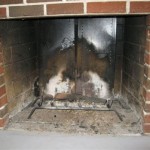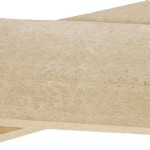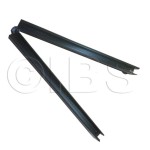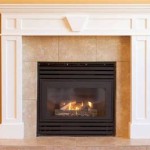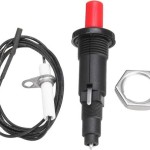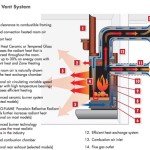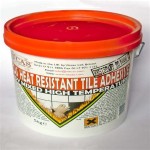```html
Are Gas Fireplaces Safe: Understanding Potential Risks and Mitigation Strategies
Gas fireplaces offer a convenient and aesthetically pleasing alternative to traditional wood-burning fireplaces. They provide instant heat, eliminate the need for wood storage and handling, and often require less maintenance. However, as with any appliance that utilizes combustion, concerns about safety are paramount. This article explores the potential risks associated with gas fireplaces and outlines strategies to mitigate those risks, ensuring a safe and comfortable heating experience.
The safety of a gas fireplace hinges on several factors, including proper installation, regular maintenance, and adherence to safety guidelines. A gas fireplace, even with modern safety features, can pose risks if not installed or maintained correctly. Furthermore, understanding the potential hazards and taking preventative measures is crucial for maintaining a safe home environment.
Potential Hazards Associated with Gas Fireplaces
Several potential hazards can arise from the use of gas fireplaces. These hazards range from relatively minor issues to potentially life-threatening situations and demand careful attention.
Carbon Monoxide (CO) Poisoning: Carbon monoxide is a colorless, odorless, and tasteless gas produced by the incomplete combustion of fuels, including natural gas and propane. A malfunctioning gas fireplace, especially one with a blocked vent or improper combustion, can release dangerous levels of CO into the home. Exposure to CO can cause flu-like symptoms, such as headache, dizziness, nausea, and fatigue. Prolonged exposure can lead to unconsciousness, brain damage, and even death. This is arguably the most significant risk associated with gas fireplaces.
Gas Leaks and Explosions: Gas leaks can occur due to faulty connections, damaged gas lines, or malfunctioning control valves. Leaked gas can accumulate in enclosed spaces, creating a significant explosion hazard. Even small leaks can pose a risk if ignited by a spark or open flame. The consequences of a gas explosion can be devastating, resulting in significant property damage, serious injuries, and even fatalities.
Fire Hazards: While gas fireplaces are generally contained, there is still a risk of fire if flammable materials are placed too close to the unit. Additionally, malfunctions within the fireplace itself, such as a gas leak that ignites outside the designated burner area, can lead to a fire. Over time, components can degrade, increasing the risk of unexpected flames or sparks. Proper clearances and regular inspections are critical to prevent fire hazards.
Burns: The glass enclosure of a gas fireplace can become extremely hot during operation and remain hot for a significant period after the fireplace is turned off. Contact with this hot surface can cause severe burns, particularly to children and pets. Protective screens or barriers can help prevent accidental contact and reduce the risk of burns.
Oxygen Depletion: In poorly ventilated spaces, the combustion process of a gas fireplace can deplete oxygen levels, leading to discomfort and potential health problems. This is more of a concern with older, less efficient models. Ensuring adequate ventilation is essential for maintaining healthy air quality within the home.
Mitigating Risks and Ensuring Safe Operation
Fortunately, many measures can be taken to mitigate the risks associated with gas fireplaces and ensure their safe operation. These measures encompass proper installation, regular maintenance, and the use of safety devices.
Professional Installation: The installation of a gas fireplace should always be performed by a qualified and licensed professional. A professional installer will ensure that the fireplace is properly connected to the gas line, that the venting system is correctly installed and functioning, and that all safety codes are met. Improper installation can lead to gas leaks, carbon monoxide leaks, and other hazards. It is important to verify the installer's credentials and experience before hiring them.
Regular Maintenance: Regular maintenance is crucial for ensuring the continued safe operation of a gas fireplace. This includes annual inspections and cleaning by a qualified technician. The technician should inspect the burner, venting system, gas lines, and control valves for any signs of damage or wear. They should also clean the burner and venting system to remove any debris that could obstruct airflow or cause incomplete combustion. Maintaining records of all maintenance performed is recommended.
Carbon Monoxide Detectors: Installing carbon monoxide detectors is essential for protecting against the risk of CO poisoning. CO detectors should be installed in hallways near sleeping areas and on each level of the home. It is important to test the detectors regularly to ensure they are functioning properly and to replace the batteries as needed. Carbon monoxide detectors provide an early warning of CO buildup, allowing occupants to evacuate the premises and seek medical attention.
Gas Leak Detectors: While not as common as CO detectors, gas leak detectors can provide an additional layer of safety. These detectors can detect the presence of natural gas or propane in the air and alert occupants to a potential leak. Similar to CO detectors, gas leak detectors should be tested regularly to ensure they are functioning properly.
Proper Ventilation: Ensuring adequate ventilation is important for maintaining healthy air quality and preventing oxygen depletion. Make sure that the room containing the gas fireplace is properly ventilated, especially during extended use. This can be achieved by opening windows or using a ventilation system. Additionally, be aware of any signs of oxygen depletion, such as headaches or dizziness, and take steps to increase ventilation if necessary.
Clearance from Flammable Materials: Maintaining adequate clearance between the gas fireplace and flammable materials is essential for preventing fire hazards. Keep curtains, furniture, rugs, and other flammable items at least three feet away from the fireplace. Also, avoid storing flammable liquids or gases near the fireplace. Following the manufacturer's recommendations for clearance is crucial.
Protective Screens or Barriers: Installing a protective screen or barrier around the gas fireplace can help prevent accidental contact with the hot glass enclosure, reducing the risk of burns. This is particularly important in homes with children or pets. The screen should be sturdy and securely attached to the fireplace to prevent it from being easily removed.
Key Safety Features in Modern Gas Fireplaces
Modern gas fireplaces incorporate various safety features designed to minimize risks and enhance user safety. Understanding these features can help consumers make informed decisions when purchasing a gas fireplace.
Oxygen Depletion Sensor (ODS): The Oxygen Depletion Sensor (ODS) is a critical safety feature that monitors the oxygen level in the room. If the oxygen level drops below a certain threshold, the ODS automatically shuts off the gas supply to the fireplace, preventing carbon monoxide buildup. This feature is particularly important in homes with limited ventilation.
Flame Failure Shut-Off: The flame failure shut-off system automatically shuts off the gas supply if the flame goes out. This prevents the release of unburned gas into the home, reducing the risk of gas leaks and explosions. This feature is essential for ensuring safety in the event of a pilot light outage or other flame-related issues.
Pressure Regulators: Pressure regulators ensure that the gas pressure supplied to the fireplace remains within a safe range. Excessive gas pressure can lead to incomplete combustion and increased carbon monoxide production, while insufficient gas pressure can cause the flame to go out. Pressure regulators help maintain consistent and safe operation.
Interlocks: Some gas fireplaces are equipped with interlocks that prevent the unit from operating if certain safety conditions are not met. For example, an interlock may prevent the fireplace from turning on if the glass enclosure is not properly installed or if the venting system is blocked. These interlocks provide an additional layer of safety and help prevent accidents.
Electronic Ignition Systems: Electronic ignition systems eliminate the need for a standing pilot light, which can consume gas even when the fireplace is not in use. Instead, electronic ignition systems use an electric spark to ignite the gas, reducing energy consumption and minimizing the risk of gas leaks. These systems are often more reliable and efficient than pilot light systems.
By understanding the potential hazards associated with gas fireplaces, taking appropriate preventative measures, and utilizing modern safety features, individuals can enjoy the comfort and convenience of a gas fireplace while minimizing the risks. Regular maintenance, proper installation, and the use of safety devices are essential for ensuring a safe and comfortable heating experience.
```
6 Essential Gas Fireplace Safety Tips Croft

Are Vent Free Gas Fireplaces Safe Ventless

Glass Door Fireplace Safety Children S Hospital Colorado
.aspx?strip=all)
Ventless Fireplaces Explained Safety Of Vent Free Fires

Gas Fireplace Faq Fireplaces Direct Learning Center

Fireplace Safety Infographic Safe Kids Worldwide

Are Gas Fireplaces Safe Dreifuss

Gas Fireplaces Are They Safe Bassemiers

Indoor Gas Fireplace Safety For Beginners

Are Gas Fireplaces Safe 7 Fireplace Safety Tips Callaway
Related Posts

